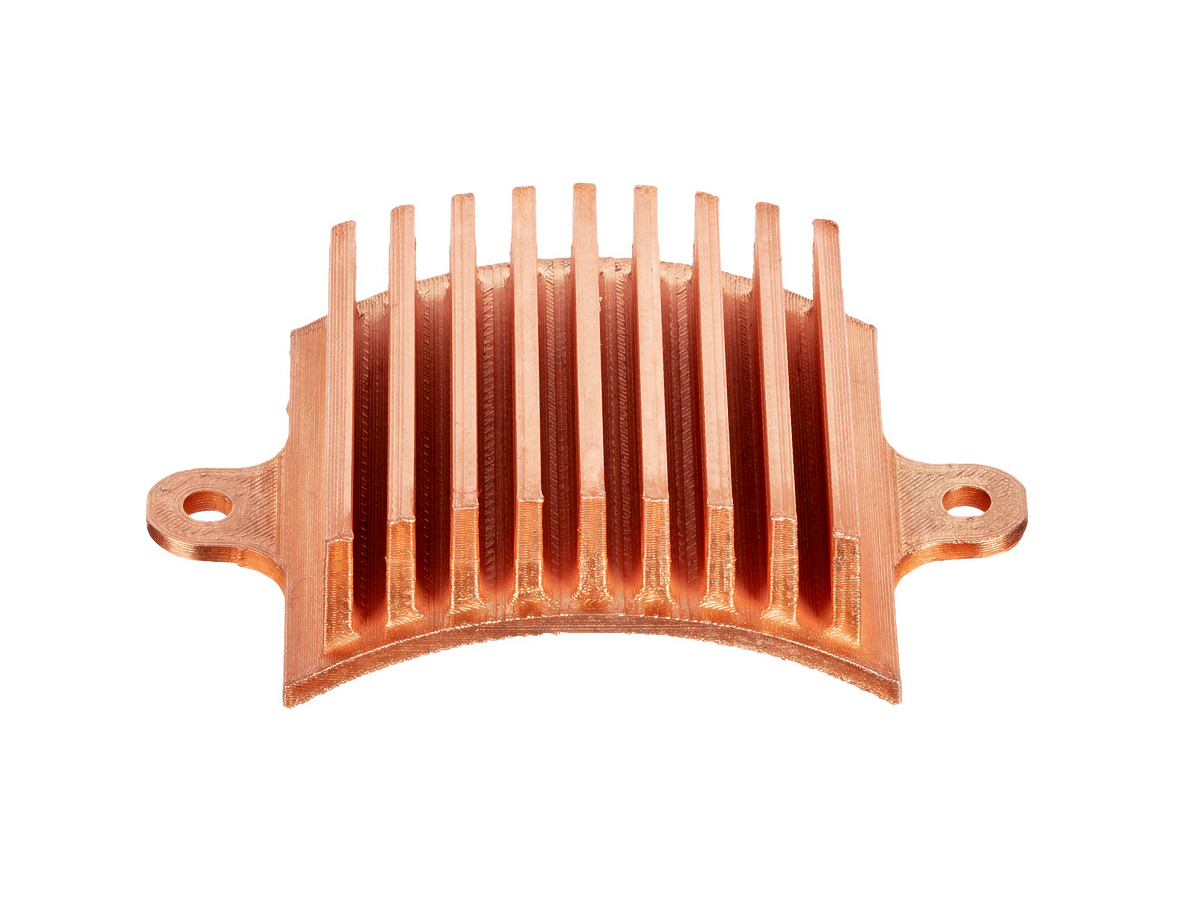Copper Alloy 3D Printing: Superior Conductivity for Custom Metal Components
Introduction to Copper Alloy 3D Printing
Copper alloys are known for their excellent electrical and thermal conductivity, corrosion resistance, and formability. These properties make them ideal for producing custom metal components in electronics, automotive, and power generation industries. Copper alloy 3D printing creates complex geometries and high-performance parts with excellent conductive properties, which are essential for applications that require efficient heat dissipation or electrical conductivity.
At Neway 3D Printing, we specialize in copper alloy 3D printing using high-quality materials like Copper C101, Copper C110, and CuCr1Zr to produce custom parts that offer superior conductivity and durability. Our copper alloy 3D printed parts are designed to meet the most demanding performance and reliability standards, whether for prototypes, functional parts, or production components.
Material Performance Matrix
Material | Temperature Resistance (°C) | Corrosion Resistance (ASTM B117 Salt Spray) | Wear Resistance (Pin-on-Disc Test) | Ultimate Tensile Strength (MPa) | Application |
|---|---|---|---|---|---|
200 | Excellent (3000 hours) | Medium (CoF: 0.45) | 210 | Electronics, Electrical Components | |
250 | Excellent (2500 hours) | Medium (CoF: 0.4) | 220 | Power Generation, Electrical Conductors | |
450 | Good (1500 hours) | High (CoF: 0.3) | 450 | Automotive, Aerospace | |
600 | Very Good (2000 hours) | High (CoF: 0.25) | 350 | Aerospace, High-Temperature Applications |
Material Selection Guide for Copper Alloy 3D Printing
When selecting copper alloys for 3D printing, consider the following factors:
Temperature Resistance: For applications exposed to high temperatures, materials like CuCr1Zr (450°C) and GRCop-42 (600°C) offer excellent performance in heat-sensitive environments, such as aerospace and high-temperature industrial applications.
Corrosion Resistance: Copper C101 and Copper C110 are ideal for applications that require exceptional corrosion resistance, especially in marine, electrical, and power generation sectors.
Wear Resistance: CuCr1Zr and GRCop-42 provide superior wear resistance, making them suitable for parts that undergo heavy friction, such as automotive components and aerospace parts.
Conductivity: Copper C101 and C110 offer the best electrical and thermal conductivity, making them ideal for applications requiring efficient energy transfer, such as electrical conductors and heat exchangers.
Process Category Matrix for Copper Alloy 3D Printing
Process | Material Compatibility | Build Speed | Precision | Surface Finish |
|---|---|---|---|---|
Copper C101, Copper C110, CuCr1Zr | High (50-100 mm/h) | Very High (±0.05mm) | Fine (Ra < 10 µm) | |
Copper C101, Copper C110, CuCr1Zr | High (50-100 mm/h) | Very High (±0.05mm) | Fine (Ra < 10 µm) | |
Copper C101, CuCr1Zr | Low (5-25 mm/h) | High (±0.1mm) | Rough (Ra > 20 µm) | |
Copper C101, Copper C110 | Moderate (30-60 mm/h) | High (±0.1mm) | Smooth to Fine |
Process Performance Insights:
Direct Metal Laser Sintering (DMLS): Known for high precision and fine surface finish (Ra < 10 µm), DMLS is ideal for producing parts that require tight tolerances and smooth surfaces. Commonly used for electronics and power generation components where high conductivity and precision are required.
Selective Laser Melting (SLM): It offers high-speed production with excellent precision, making it ideal for structural components, such as heat exchangers and electrical connectors requiring high strength and conductivity.
Electron Beam Melting (EBM): Suitable for parts exposed to extreme temperatures, especially in aerospace and high-performance applications. EBM offers a slower build speed and rougher surface finish but provides high strength and thermal resistance.
Powder Bed Fusion (PBF): Known for precision and smooth finishes, PBF is ideal for creating parts with tight tolerances and complex geometries, especially in power generation and aerospace applications where electrical and thermal conductivity is paramount.
Process Selection Guide for Copper Alloy Parts
Direct Metal Laser Sintering (DMLS): Ideal for parts requiring high precision and smooth surfaces. DMLS is commonly chosen for electronics, connectors, and custom components where fine detail and conductivity are critical.
Selective Laser Melting (SLM): Best suited for structural aerospace components or applications requiring high mechanical properties and excellent electrical and thermal conductivity.
Electron Beam Melting (EBM): Recommended for parts exposed to extreme temperatures and stresses, ideal for aerospace and high-temperature applications.
Powder Bed Fusion (PBF): Best for high-precision parts with smooth finishes, making it suitable for creating parts with intricate designs and high-performance needs in sectors like medical, aerospace, and electronics.
Case In-Depth Analysis: Copper Alloy 3D Printed Electronics and Aerospace Components
Electronics Industry: We produced custom heat exchangers for an electronics manufacturer using Copper C110 via SLM. The material’s excellent conductivity made it the ideal choice for efficient heat dissipation in high-performance electronic devices. The precision of SLM ensured a perfect fit, improving performance and reliability.
Aerospace Industry: We produced cooling plates using CuCr1Zr via DMLS for a major aerospace client. The material’s superior thermal conductivity and high-temperature resistance were critical for these parts exposed to extreme conditions in jet engines. The DMLS process allowed for the creation of complex internal cooling channels and the optimization of performance.
FAQs
What are the advantages of using copper alloys in 3D printing for electronics?
How does DMLS work with copper alloys like Copper C101 and Copper C110?
What are the best copper alloys for high-performance aerospace applications?
How does SLM improve the quality of copper alloy components in automotive applications?
What are the thermal conductivity benefits of using CuCr1Zr in aerospace components?

